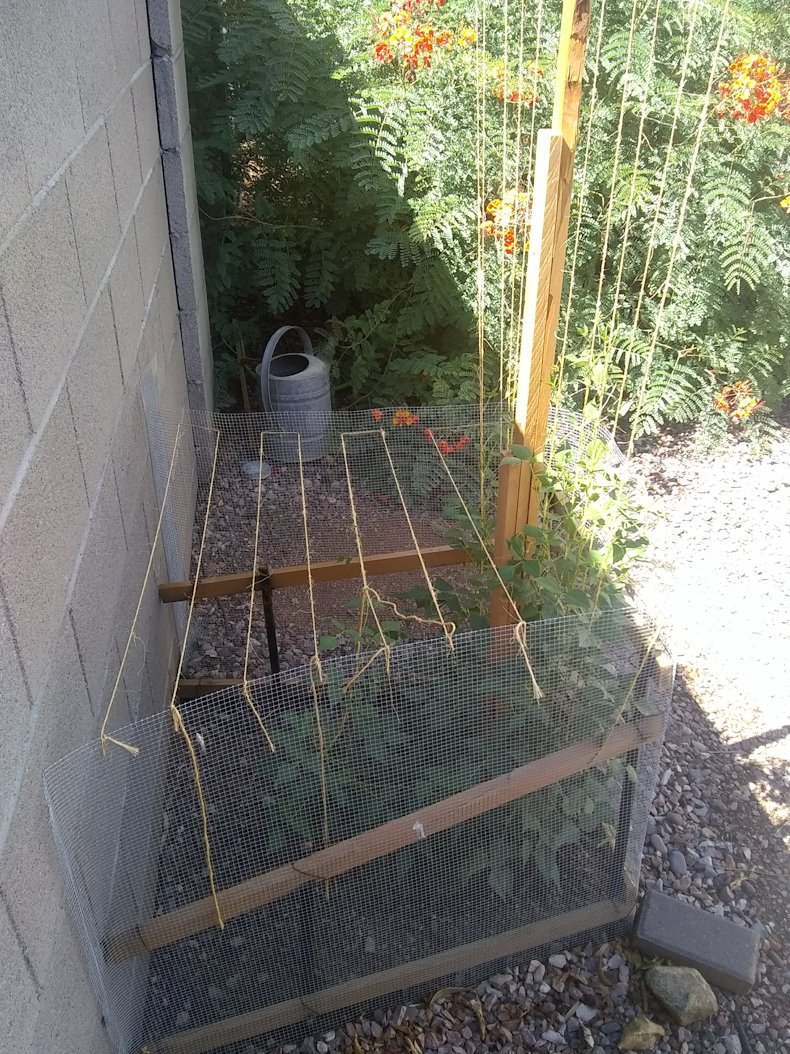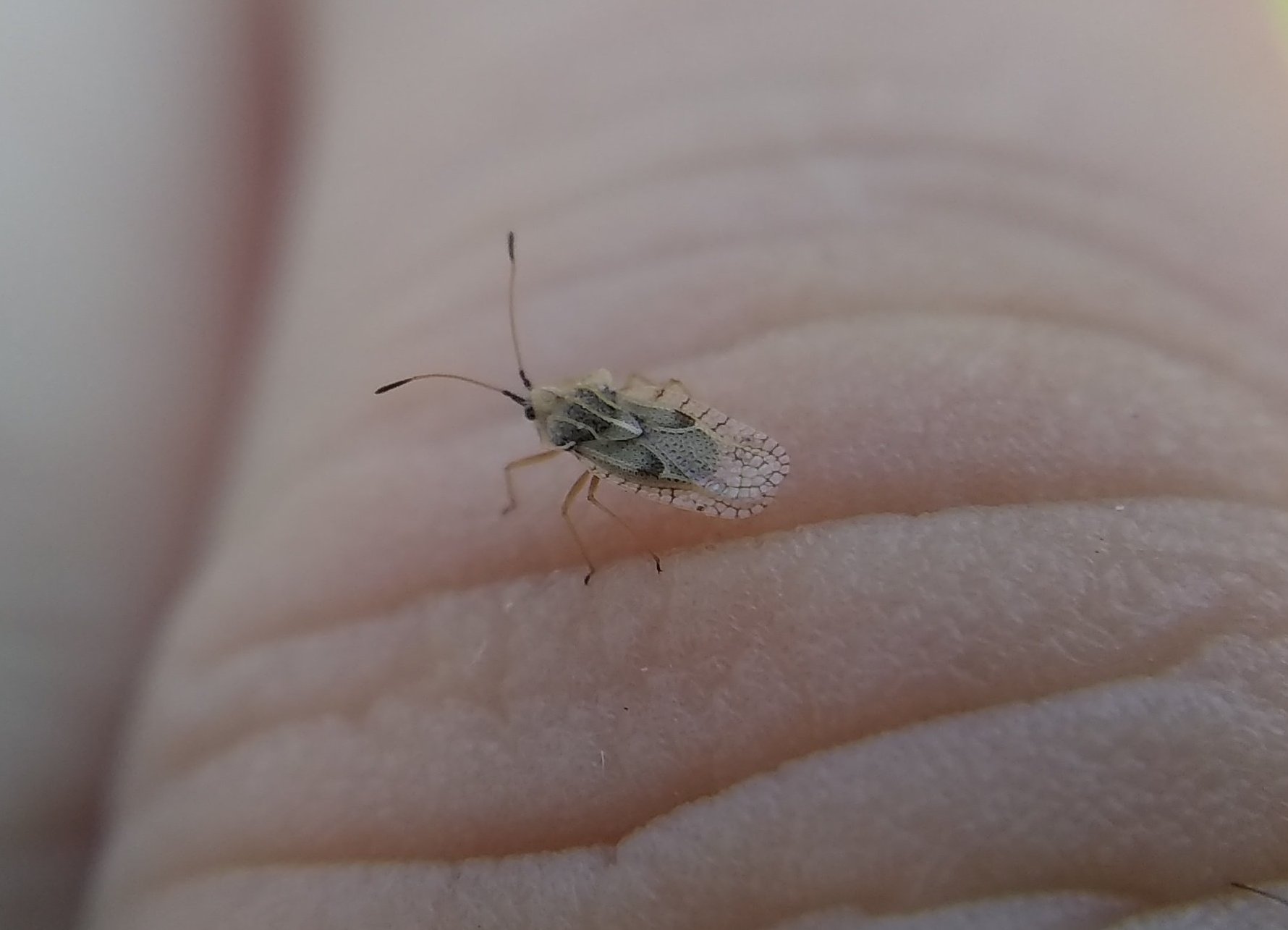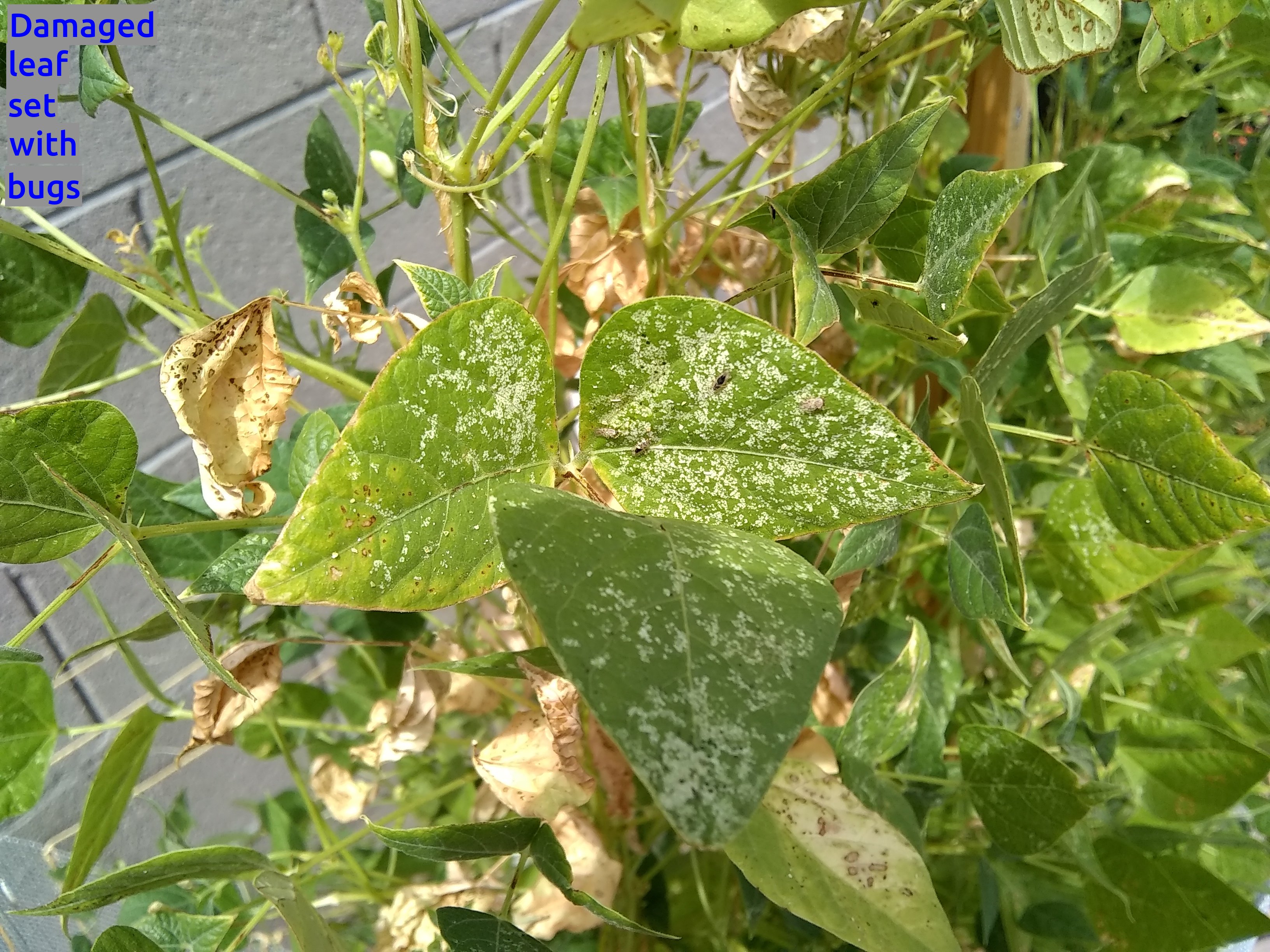
Hello internetz, apparently a bunch of you are curious about how I managed to grow a bunch of beans in the hot sonoran desert summer without any soil amendments, fertilizer, or daily watering. Below I will attempt to briefly explain how I accomplished this feat along with some things I learned along the way:
So, this whole adventure started early in the summer of 2021 as a quest to obtain shade for the west wall of our house. I was doing research on the internet about what kinds of climbing/vining plants would be able to survive our intense summers. I did find several options in that regard, but none that really perked my interest. I was also hesitant to regularly water something for the sole purpose of obtaining shade. Eventually after persisting at this search for quite some time, I stumbled upon tepary beans as an option. These really fascinated me as I had always wondered how the native peoples of this area had survived in such a harsh environment for thousands of years. Researching tepary beans helped answer those questions, and inspire me to try growing them for myself.
Ultimately I decided to try out tepary beans as an experiment first, and evaluate their feasibility as temporary shade plants for the west wall. I started by purchasing seeds for yellow tepary from nativeseeds.org. Once they arrived, I planted 11 of them in a rabbit-protected area around July 10th 2021. Shortly thereafter I added a 5.5 foot (168 cm) tall trellis for them to climb up. I planted each seed about an inch deep, which I felt was about right given how quickly our soil dried out. I also ensured there was a pronounced water basin around the entire planting area to hold the water by the seeds. I chose a planting area that received some afternoon shade as I was suspicious of the claimed heat tolerance on the seed packet. However, I would feel comfortable planting these in full sun next time. Initially, I watered these seeds every evening so that they would sprout. However, after that initial sprouting period, I transitioned to watering roughly every 4 days unless it rained. I did not add any organic mater, mulch, fertilizer, or potting soil before planting as I wanted to determine whether our native soil was fit for growing these beans.

By August 25th our monsoon season was in full swing and we had already received almost 10 inches of rain. This was great as I was able to get by without watering for weeks at times. Unfortunately it also brought in every plant pest one could possibly imagine. This amount of summer rainfall is somewhat unusual for this area, and as such, the native plants don't typically need to handle the amount of pest pressure that we received this summer. This meant that these tepary beans were not fully prepared to handle the abundance of bugs. The tepary beans did put up a good fight with their natural defenses, and repelled most of these bugs, but unfortunately one particular pest did get through.



1. These beans have descended from a species of bean that was native to the southwest United States and northern Mexico long before the Columbian exchange. They were cultivated for thousands of years by the native peoples of the area and were selectively bread to be larger and more productive. Thus, they retain the drought and heat tolerance of their wild ancestors while also being molded by human hands into what was once a staple food source.
2. Because these beans originally descended from desert plants they retain certain characteristics of their wild relatives. Notable amongst these characteristics are the ability to adjust their leaves in such a way that the intense sunlight and heat does not burn them. They do this by tilting their leaves almost parallel to the rays of sun so that the sunlight is hitting them at a significant angle, thus making it less intense on any given point on the leaf. Also notable is the tendency for the beans to split open once dry and throw their seeds out across the desert. This was a successful spreading strategy for the ancestors of this plant, but can be somewhat bothersome to those growing it today. This tendency means that it is very important to regularly check the plants during the harvest season as dry beans can't simply be left on the plant until they all mature. If you do this, the beans will end up splitting open and flinging the seeds everywhere.
3. I have heard varying points of view from various different sources regarding watering. Some sources indicate that these beans can be grown in the sonoran desert on monsoon rains alone, while others report that they still produced well in wetter areas of the country. I personally feel that both of these viewpoints may be partially correct. All plants need regular water to start from seed. However, beyond that, I personally only watered mine during dry periods between monsoon rains. When I did water I deep watered rather than just wetting the surface of the soil. I do know that they need some amount of drought stress to produce at all, so if you are trying to grow them in a wet area, you may have trouble if they are not getting that drought stress.
In summary, I have been very impressed with the tenacity of these bean plants and will definitely be growing them again next summer. I am not sure they would be applicable for use as a summer shade structure for our west facing wall, but as things turned out I may not really need the shade that badly after all, so I still have yet to explore that use. Also, I would like to thank not only nativeseeds.org for their work in preserving tepary beans for future gardeners, but also the countless indigenous farmers who slowly molded this bean into what it is today. Their collective efforts over the last several thousand years are very much appreciated!
For anyone interested in learning even more about tepary beans the original resource on the topic seems to be a 1912 agricultural bulletin that is, unfortunately, filled with repulsive and dated language regarding the native peoples of the area. I hesitate to share this resource with you for that reason. I do not approve of the use of such language. However, since I can't easily strip out the repulsive language, I am forced to share the entire book with you. I do this only because it contains the results of some official agricultural studies that were performed on tepary beans. The book is titled "Southwestern Beans and Teparies" and can be read here. In each case the tepary beans significantly outperformed the beans that were introduced by the Europeans. In conditions where the European beans failed to produce anything the tepary beans were still able to produce a viable crop. I feel that these results are very much in line with what I have experienced in my own experiment. If the language in that book is simply unacceptable for you I understand completely and have compiled a list of some more modern resources that also contain good information:
1. Here is the Wikipedia article about tepary beans.
2. Here is a Mother Earth News article about tepary beans.
3. Here is a YouTube video from Tuscon about a local farm that grows tepary beans. This is a really great resource to watch as it eloquently illustrates the deep cultural connections between these beans and the Tohono O'odham people. It also covers how close these beans were to extinction and how they were saved.
4. Here is an NPR story about tepary beans.
5. Here is a more detailed growing guide that I referenced..
I hope you have enjoyed this page! If you have, you might find other interesting things like this on my home page. Happy gardening!